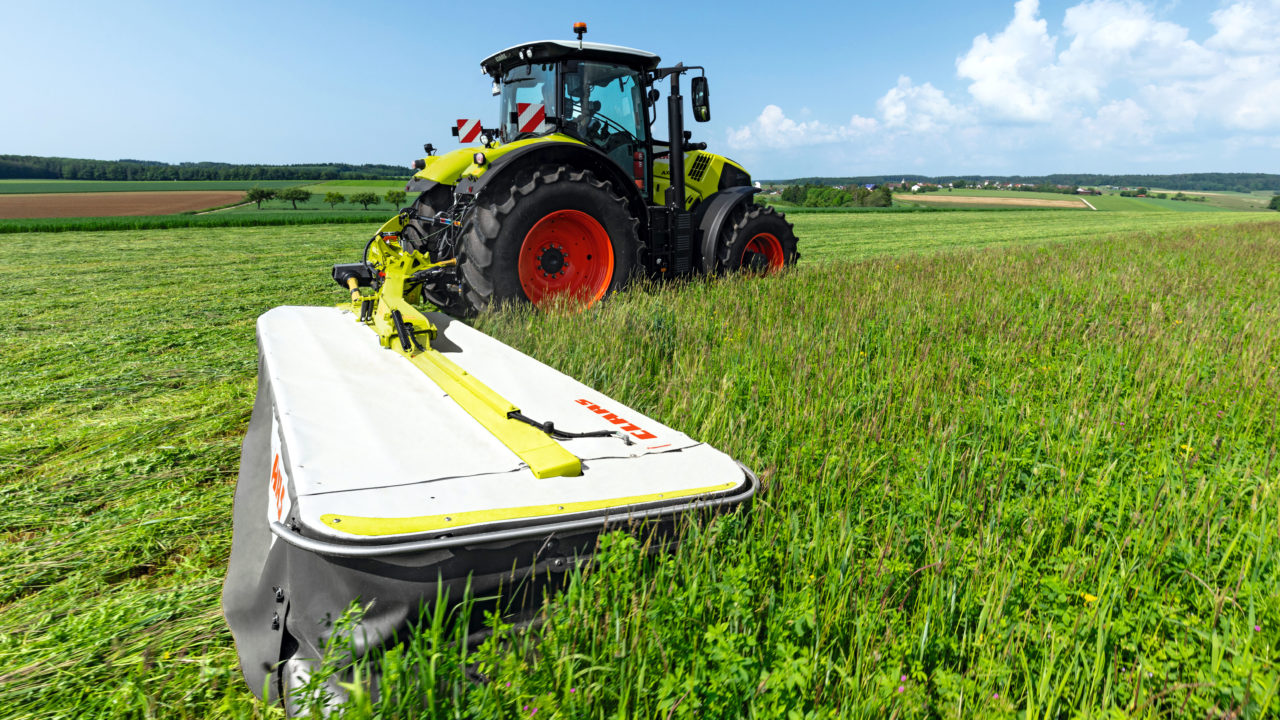The mower has become the subject of much attention over the last few years as manufacturers vie for a slice of this crowded market.
The basic concept of grass cutting has been perfected by the various brands involved, although minor differences in the drive to the mower bed, and in the bed itself, do still set some apart from the rest.
The focus has therefore turned to the way in which they are mounted and arranged on the tractor.
Fully mounted ‘butterfly’ sets have been proving popular over the last few years, but these are coming under pressure from machines such as Tanco’s trailed set and Krone’s self propelled BiG M.
Another option
Claas has just added to the mix with the launch of a 4.2m mower which, when combined with a 3m front-mounted unit, will give a 7m cut with only one mower attached at the rear.
Named the Disco 4400 Contour, the latest machine incorporates all the well tried features of the current range.
These include a pivot-mounting at its centre of gravity, with an adjustable spiral spring ensuring an even descent of the mower bed when lowering into work.
A single mower on the rear, rather than a twin set, will minimise total ‘all-up’ weight and may also prove to be cheaper for a specified width, when the retail price is made available.
Swath size
Having such a wide mower does not come without its problems though. Two major issues are transport height and swath width.
To cope with the latter, Claas offers the provision of a double-swath laying option. This works by placing two swath drums on the 4th and 5th disc (from the inside) to create one narrower and one wider single swath.
The feature is useful on wet or soft ground as it avoids driving on the forage while also presenting a greater surface area for drying – two important issues here in Ireland.
Vector folding of mower bed
Turning to transport, the height of the unit when raised may be reduced by bringing it up to a position of 120° to the horizontal, rather than the usual 180°.
This is enabled by the extension of the hydraulic break back ram, which may be operated while the unit is folded.

Claas refers to this feature as ‘vector folding’ and, in addition to reducing height, it also minimises tail swing when compared to larger mowers, which fold back along the axis of the tractor.
The 4.2m cutting width might normally hinder access under wires and bridges, but this feature allows transport height to remain below 4m for road travel.
It is also easier to negotiate tight lanes and swing through narrow gates according to the company.
Jaguar 900 updates
Class has also brought some improvements to its Jaguar 900 series forager harvesters with the main item, for grassland farmers at least, being the option of drive to the pick-up being independent of the feed auger.

Being able to adjust the speed of the pick-up reduces tine wear while also allowing more precise control of chop length, according to Claas.
With this option, the pick-up is powered by a twin hydraulic drive system while the intake auger continues to be driven via the quick-release mechanical coupler.
Its speed can be adjusted in accordance with the desired length of cut.
The principal objective of enabling the pick-up reel speed to be varied, is to allow it to be adjusted automatically to suit the forager’s ground speed, so the faster the forward speed, the faster the pick-up reel speed.
New app for additive application
Claas has also launched a new app so that operators can more accurately calculate dose rates for the factory-fitted silage additive applicator.
The parameters entered into the app include the expected yield per hectare, size of area to be harvested, working width, expected working speed and recommended dosage specified by silage additive manufacturer.
The figure arrived at, can then be entered into the onboard CEBIS terminal and the application rate be specified as rate per tonne or per hectare.
The rate can be altered on the move, should any of the parameters change during operation.
